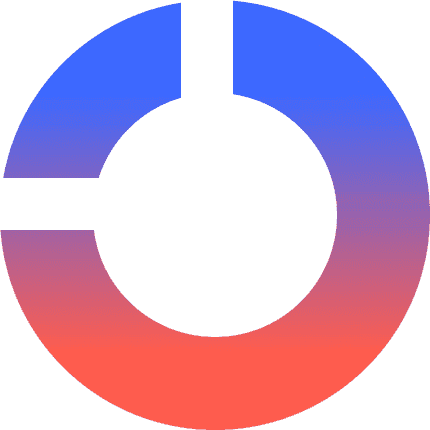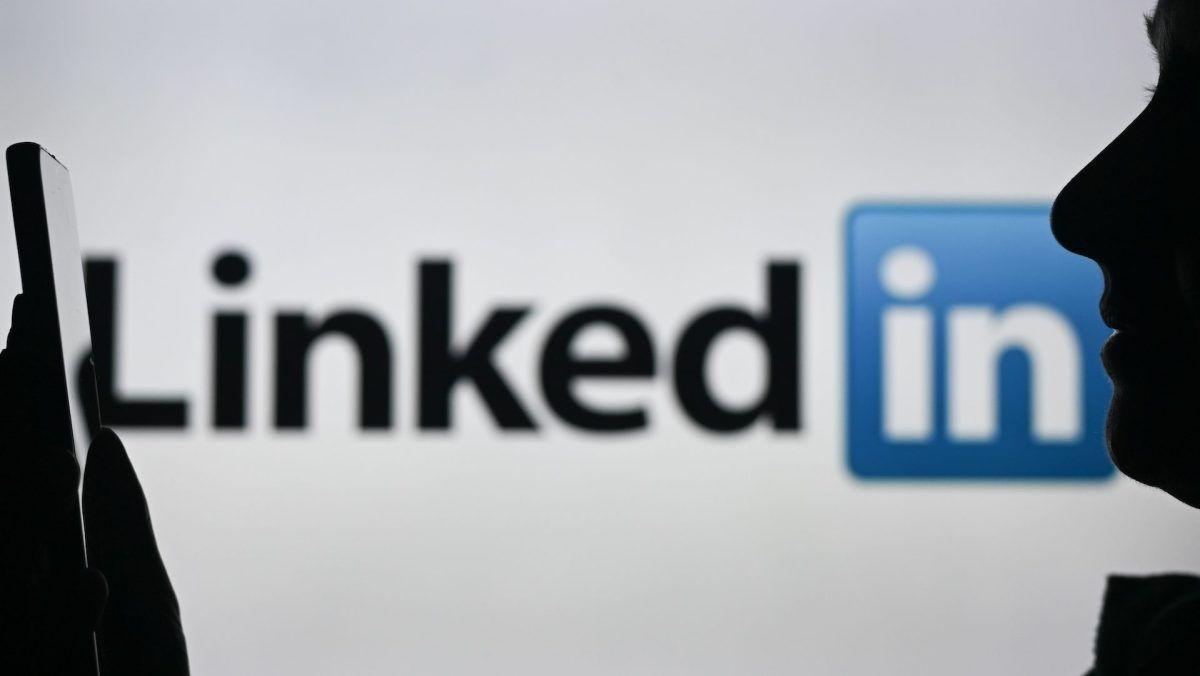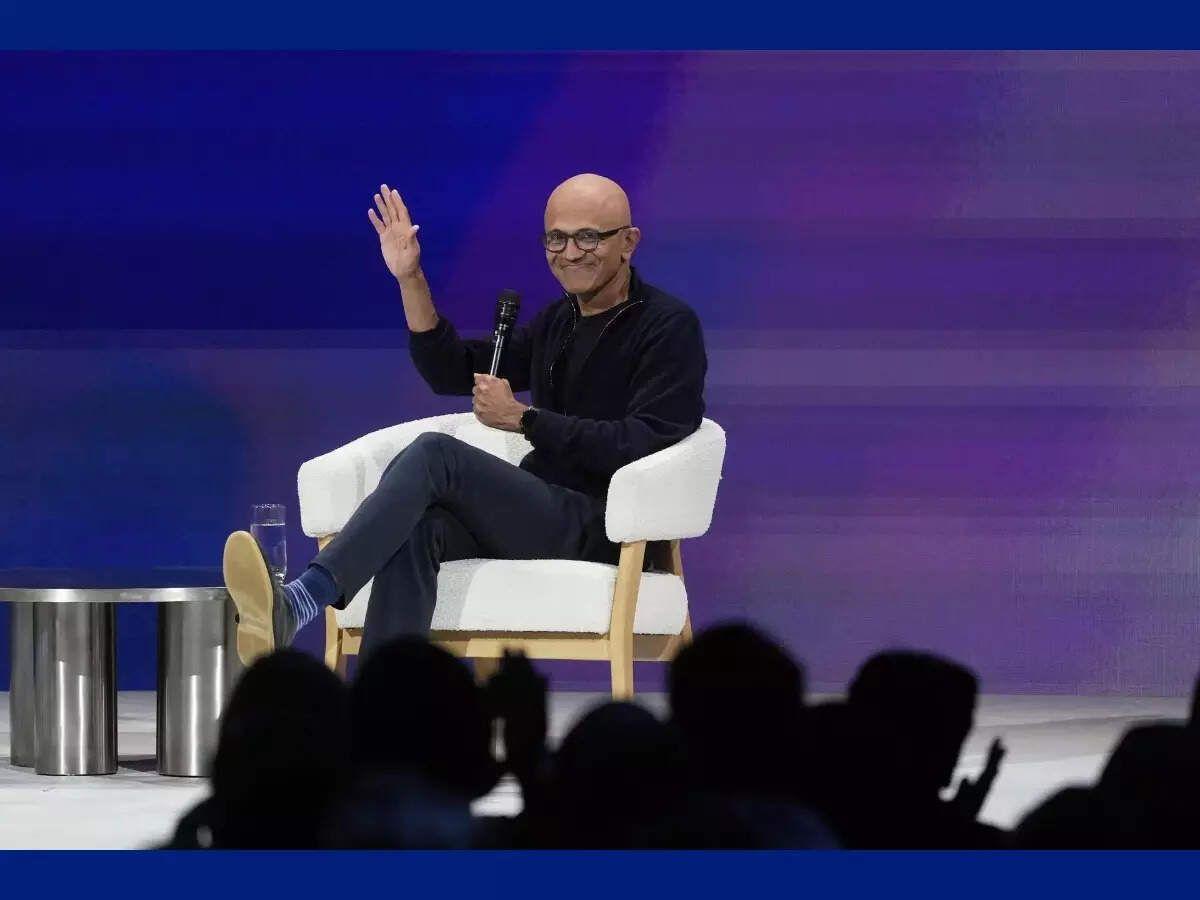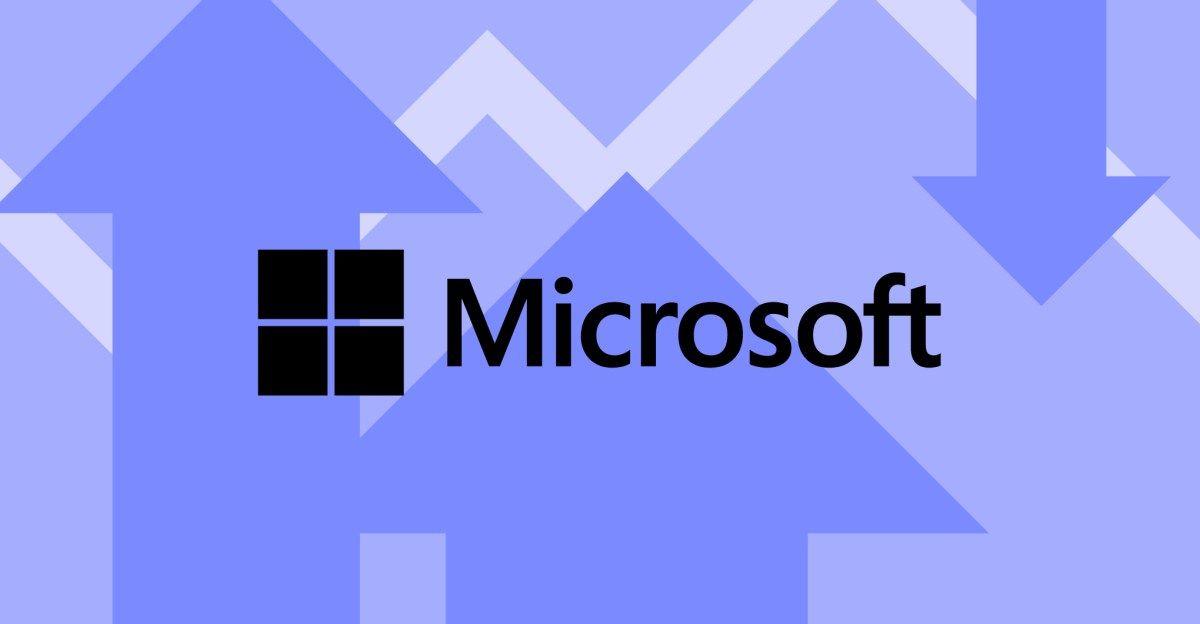LinkedIn CEO Ryan Roslansky Embraces AI for High-Stakes Communication
3 Sources
3 Sources
[1]
LinkedIn CEO Roslansky admids using AI to draft almost every email
LinkedIn CEO Ryan Roslansky revealed he uses Microsoft's Copilot AI to draft nearly every email, including high-stakes messages to his boss, Microsoft CEO Satya Nadella. The disclosure occurred during a fireside chat at LinkedIn's San Francisco office. At the event, details of which were leaked to Business Insider, Roslansky explained his rationale for integrating the technology into his daily communications. "A lot of the time when I'm sending a super high-stakes email to Satya Nadella or other CEOs or world leaders... you've got to make sure you sound super smart," Roslansky stated. He confirmed his reliance on the tool, adding, "So I would say that without a doubt, almost every email that I send these days is being sent with the help of Copilot." Roslansky clarified that his use of Microsoft Copilot is not a passive, automated function. He described the process as interactive, where the AI poses a series of questions to the user to help construct and shape a tailored response. This method requires more direct, hands-on involvement than a simple "AI reply" button would. He emphasized the quality of the output and his consistent use, stating he uses it "for every important email, without a doubt, on a daily basis." Having led LinkedIn for the past five years, Roslansky characterized the AI as a "second brain" that is personalized for his specific needs. The practice of chief executives adopting AI tools extends beyond his own use. In June, Google CEO Sundar Pichai mentioned using AI tools like Replit and Cursor to "vibe code" a website, which involves generating website code from text-based prompts. Separately, Nvidia CEO Jensen Huang stated in February that he utilizes AI as a personal tutor to assist him in learning new concepts. In contrast to his personal adoption, an AI-powered feature introduced by LinkedIn itself has seen a different reception. The company released an AI writing tool designed to suggest edits and changes to a user's posts before publication. Roslansky told Bloomberg in June that this feature was not as popular as the company had anticipated. He attributed the subdued user engagement to members' fears of potential backlash for posting content perceived as AI-generated. The need for authenticity is paramount, he explained, because posts on the platform are tied directly to an individual's professional reputation. Roslansky's tenure as CEO has coincided with substantial financial growth for the company. Under his leadership, LinkedIn's annual revenue more than doubled, increasing from $7 billion in 2019 to nearly $17 billion in 2024. The platform itself has also expanded its reach, now claiming to be "the world's largest professional network" with a user base of over one billion members. This period of growth has occurred as AI technologies have become more integrated into business operations. The broader economic context for such technological adoption includes significant growth projections for the artificial intelligence sector. According to one forecast, AI technology is expected to contribute a total of $15.7 trillion to the global economy by the year 2030.
[2]
LinkedIn's CEO Says He Uses AI to Write 'Almost Every Email,' Including to His Boss, the Head of Microsoft
LinkedIn achieved nearly $17 billion in revenue in 2024, up from $7 billion in 2019. LinkedIn CEO Ryan Roslansky has found a solid use case for AI: writing emails. In a fireside chat at LinkedIn's San Francisco office on Tuesday, leaked to Business Insider, Roslansky said that he uses AI to craft "almost every email," even the "super high-stakes" messages sent to his boss, Microsoft CEO Satya Nadella. "A lot of the time when I'm sending a super high-stakes email to Satya Nadella or other CEOs or world leaders... you've got to make sure you sound super smart," Roslansky said at the fireside chat. "So I would say that without a doubt, almost every email that I send these days is being sent with the help of Copilot." Related: OpenAI Is Creating a LinkedIn Competitor to Help You Find a Job Although Roslansky said he uses Microsoft Copilot AI to help draft messages, he doesn't just auto-generate an email response. Instead, the AI engages users by asking a series of questions to help shape a response. The process requires more hands-on involvement than simply pressing an "AI reply" button, he said. The output is good enough that Roslansky says he uses it "for every important email, without a doubt, on a daily basis." Roslansky, who has led LinkedIn for the past five years, said that using AI is like tapping into "a second brain" personalized just for him. And he isn't the only CEO to tout using AI at work. Google CEO Sundar Pichai said in June that he was using AI tools like Replit and Cursor to "vibe code" a website, or create the code for a website based on prompts. Nvidia CEO Jensen Huang stated in February that he was using AI as a tutor to help learn new concepts. Related: Here's How the CEOs of Salesforce and Nvidia Use ChatGPT in Their Daily Lives LinkedIn has also released an AI writing tool that suggests changes to a user's posts before they hit publish. Roslansky told Bloomberg in June that the AI feature wasn't as popular as the company thought it would be because LinkedIn members feared the backlash for posting AI-generated content. Posts on LinkedIn must be seen as authentic because it is someone's professional reputation, he said.
[3]
LinkedIn CEO Ryan Roslansky Reveals How Microsoft's Copilot Now Shapes Every High-Stakes Email To CEOs, World Leaders - Microsoft (NASDAQ:MSFT)
LinkedIn CEO Ryan Roslansky revealed that artificial intelligence now plays a central role in shaping his most important communications, from emails to Microsoft Corp. (NASDAQ:MSFT) CEO Satya Nadella to exchanges with global leaders. Copilot Helps LinkedIn CEO Craft High-Stakes Emails Speaking during a fireside chat at LinkedIn's San Francisco office on Tuesday, Roslansky said Microsoft's AI assistant Copilot has become his go-to tool for drafting and refining high-stakes messages, reported Business Insider. "A lot of the time when I'm sending a super high-stakes email to Satya Nadella or other CEOs or world leaders or etcetera, you've got to make sure you sound super smart when you do that," he said. He added, "So I would say that without a doubt, almost every email that I send these days is being sent with the help of Copilot." LinkedIn CEO Uses AI As A Step-By-Step Guide Rather Than A Full Drafting Tool Roslansky explained that he doesn't rely on AI to draft entire replies but instead uses it as a guide. The tool works by prompting him with questions and helping to shape the direction of his response. "Historically, there'd be a button that said, 'Draft the reply for me.' ... The problem is that you're actually asking AI to make tons of decisions for you when you ask it to blindly reply to an email," he noted. See Also: Apple May See Fewer Searches In Safari, But Google CEO Sundar Pichai Insists AI Is Fueling Overall Query Growth: 'Far From A Zero-Sum Game' Top Tech Leaders Are Using AI To Boost Productivity And Decision-Making In August, Nadella revealed that GPT-5 integration into Microsoft 365 Copilot had become a central part of his daily workflow, using AI prompts to prepare meetings, assess projects and identify risks. Nadella showed how Copilot helped him generate likely discussion topics for meetings and draft project updates from emails, chats, and past meetings, covering KPIs, wins and losses, risks, competitive moves, and potential tough questions with answers. Last month, LinkedIn co-founder Reid Hoffman shared that he subscribed to premium tiers on multiple AI platforms, spending at least $650 per month. On the "Moonshots with Peter Diamandis" podcast, Hoffman explained that he ran the same tasks across AI tools like ChatGPT, Microsoft Copilot, Google Gemini and Anthropic Claude, then integrated the results to build a coordinated multi-AI system. At the time, top-tier AI subscriptions included ChatGPT Pro at $200 per month, Google Gemini at $249.99, other platforms averaging $100+, and Microsoft Copilot at $99 annually plus Office 365 fees. OpenAI had also explored premium business subscriptions priced up to $2,000 per month in 2024. Read Next: Coinbase's Base Blockchain Now 'Exploring' Token As US Crypto Regulatory Environment Turns Friendly Disclaimer: This content was partially produced with the help of AI tools and was reviewed and published by Benzinga editors. Photo courtesy: JLStock on Shutterstock.com MSFTMicrosoft Corp$513.56-0.85%OverviewMarket News and Data brought to you by Benzinga APIs
Share
Share
Copy Link
LinkedIn CEO Ryan Roslansky reveals his extensive use of Microsoft's Copilot AI for drafting important emails, including those to Microsoft CEO Satya Nadella. This disclosure highlights the growing adoption of AI tools by top executives in their daily operations.

LinkedIn CEO's AI-Powered Communication Strategy
LinkedIn CEO Ryan Roslansky has made a surprising revelation about his communication habits, disclosing that he uses Microsoft's Copilot AI to draft nearly every email he sends, including high-stakes messages to his boss, Microsoft CEO Satya Nadella, and other world leaders
1
. This admission came during a fireside chat at LinkedIn's San Francisco office, details of which were leaked to Business Insider2
.The AI-Assisted Email Process
Roslansky explained that his use of Microsoft Copilot is not a passive, automated function. Instead, it's an interactive process where the AI poses a series of questions to help construct and shape a tailored response. "A lot of the time when I'm sending a super high-stakes email to Satya Nadella or other CEOs or world leaders... you've got to make sure you sound super smart," Roslansky stated
1
.The LinkedIn CEO emphasized that this method requires more direct, hands-on involvement than a simple "AI reply" button would. He uses it "for every important email, without a doubt, on a daily basis," highlighting the quality of the output
1
.AI as a "Second Brain"
Having led LinkedIn for the past five years, Roslansky characterized the AI as a "second brain" that is personalized for his specific needs
2
. This adoption of AI tools extends beyond Roslansky, with other tech leaders also incorporating AI into their workflows.Other Tech Leaders Embracing AI
Google CEO Sundar Pichai mentioned using AI tools like Replit and Cursor to "vibe code" a website, which involves generating website code from text-based prompts
1
. Nvidia CEO Jensen Huang stated that he utilizes AI as a personal tutor to assist him in learning new concepts1
.Microsoft CEO Satya Nadella has also integrated GPT-5 into Microsoft 365 Copilot, using AI prompts to prepare for meetings, assess projects, and identify risks
3
.LinkedIn's Growth and AI Integration
Roslansky's tenure as CEO has coincided with substantial financial growth for LinkedIn. The company's annual revenue more than doubled, increasing from $7 billion in 2019 to nearly $17 billion in 2024
1
. The platform now claims to be "the world's largest professional network" with over one billion members1
.Related Stories
AI Adoption Challenges
Despite the personal adoption of AI tools by executives, LinkedIn's own AI-powered feature for suggesting edits to users' posts has seen a different reception. Roslansky told Bloomberg that this feature was not as popular as anticipated, attributing the subdued user engagement to fears of potential backlash for posting content perceived as AI-generated
1
.The Future of AI in Business
The broader economic context for such technological adoption includes significant growth projections for the artificial intelligence sector. According to one forecast, AI technology is expected to contribute a total of $15.7 trillion to the global economy by the year 2030
1
. As more executives and companies integrate AI into their daily operations, the landscape of business communication and decision-making continues to evolve.References
Summarized by
Navi
[2]
Related Stories
LinkedIn's AI Writing Assistant Faces Unexpected Challenges in User Adoption
23 Jun 2025•Technology

Microsoft CEO Satya Nadella Reveals Five GPT-5 Prompts for Enhanced Productivity
29 Aug 2025•Technology

Microsoft Reshuffles Leadership: LinkedIn CEO to Oversee Office Products in AI-Driven Reorganization
05 Jun 2025•Business and Economy

Recent Highlights
1
AI Chatbots Sway Voters More Effectively Than Traditional Political Ads, New Studies Reveal
Science and Research

2
OpenAI declares code red as Google's Gemini 3 gains 200 million users in three months
Technology

3
Trump approves Nvidia H200 chip exports to China with 25% revenue cut, defying Senate concerns
Policy and Regulation





